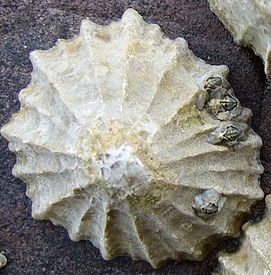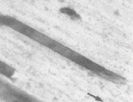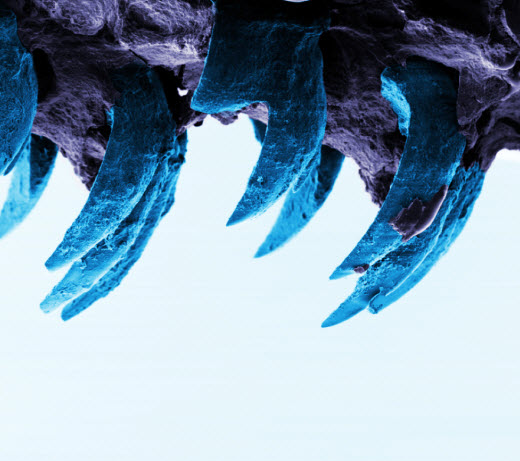Scientists find ‘strongest’ natural material
February 19, 2015
Limpet teeth might be the strongest natural material known, with biological structures so strong (3.0 to 6.5 GPa tensile strength) they could be copied to make future cars, boats, and planes, a new study by researchers from the University of Portsmouth has found.
The research was published (open access) Wednesday Feb. 18 in the Royal Society journal Interface.
“Until now, we thought that spider silk was the strongest biological material [at ~4.5 GPa] because of its super-strength and potential applications in everything from bullet-proof vests to computer electronics,” noted Professor Asa Barber from the university’s School of Engineering.
The limpet teeth strength is also comparable to that of the strongest man-made fibers, such as high-performance Toray T1000G carbon fibers, which also have a tensile strength of 6.5 GPa, the paper noted.
Munching rock
Barber found that the teeth contain a hard mineral known as goethite, which forms in the limpet as it grows.
“Limpets need high-strength teeth to rasp over rock surfaces and remove algae for feeding. We discovered that the fibers of goethite are just the right size to make up a resilient composite structure. This discovery means that the fibrous structures found in limpet teeth could be mimicked and used in high-performance engineering applications such as Formula 1 racing cars, the hulls of boats, and aircraft structures.”

Limpet on a rock (credit: Tango22/Wikimedia commons)
The research also discovered that limpet teeth strength is scale-independent (not affected by size). “Generally a big structure has lots of flaws and can break more easily than a smaller structure, which has fewer flaws and is stronger. The problem is that most structures have to be fairly big so they’re weaker than we would like. Limpet teeth break this rule as their strength is the same no matter what the size.”
The study determined the tooth properties by using atomic force microscopy to pull apart the material down to the atomic level. “The testing methods were important as we needed to break the limpet tooth. The whole tooth is slightly less than a millimeter long but is curved, so the strength is dependent on both the shape of the tooth and the material.

Close-up of the tooth indicating the distinct phases of the goethite “reinforcing fiber” and the chitin “matrix,” and highlighting the structural resemblance to a fiber-reinforced composite material, with an average fiber diameter of approx. 20 nm. (credit: Asa H. Barber et al./Interface)
Abstract for Extreme strength observed in limpet teeth
The teeth of limpets exploit distinctive composite nanostructures consisting of high volume fractions of reinforcing goethite nanofibres within a softer protein phase to provide mechanical integrity when rasping over rock surfaces during feeding. The tensile strength of discrete volumes of limpet tooth material measured using in situ atomic force microscopy was found to range from 3.0 to 6.5 GPa and was independent of sample size. These observations highlight an absolute material tensile strength that is the highest recorded for a biological material, outperforming the high strength of spider silk currently considered to be the strongest natural material, and approaching values comparable to those of the strongest man-made fibres. This considerable tensile strength of limpet teeth is attributed to a high mineral volume fraction of reinforcing goethite nanofibres with diameters below a defect-controlled critical size, suggesting that natural design in limpet teeth is optimized towards theoretical strength limits.
